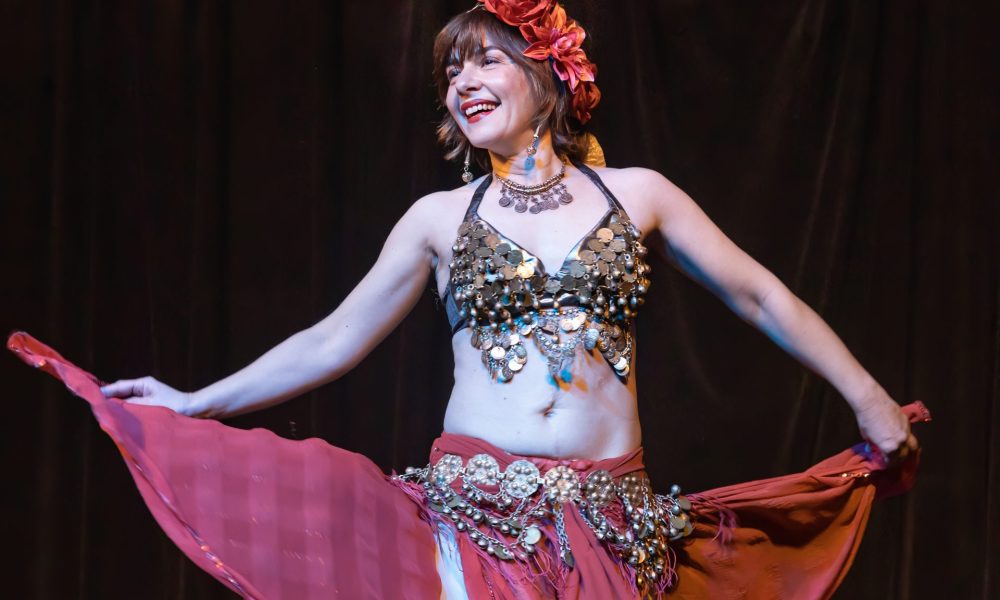When Diana Yochkova Smith performs, audiences see her passion and skill. Many see the name “Diana Smith” and dismiss the olive complexion; they assume she is a Caucasian American belly dancing.
That is incorrect on multiple levels. Smith is an immigrant from Bulgaria who takes dance classes in Springfield. Her style is based on folk dances from Europe.
“I am shocked some venues would outright assume that I am culturally appropriating belly dance,” Smith said. “I am in fact creatively expressing the music and dance culture I grew up in and love very much.”
Cultural appropriation is defined as “the act of copying or using the customs and traditions of a particular group or culture, by somebody from a more dominant group in society.”
Appropriation is often identified through culturally insensitive and inaccurate language, the use of stereotypes, a lack of authenticity, and taking opportunities from the culture being appropriated by Europeans and Americans.
In Smith’s case, one might assume that if Bulgaria is part of Europe, this is cultural appropriation. The reality is more complex.
“Bulgaria was occupied by the Ottoman empire for 500 years and was liberated less than 150 years ago, leaving Bulgarian culture, language, and music heavily influenced by Turkish and Arabic culture, language, and music. . . . I grew up on the East side of Plovdiv next to the Roma district (Tzigani as they are known in Bulgaria),” Smith said.
In the past, Americans used “gypsy,” as a catch all term for Roma and Eastern European peoples, but the term is no longer used because it is actually a racial slur. Belly dancers have been making an effort to use culturally sensitive language when describing the styles they perform.
In the 1960s and 1970s, there was a resurgence of belly dance. Venues showcasing belly dance were owned by Greeks or Arabs. Because audiences wanted an authentic cultural experience, but there weren’t enough Middle Eastern belly dancers, clubs hired Americans and wanted dancers to have names that fit the persona. American dancers adopted stage names like Suhaila, Aliya, or Morocco.
In an effort to be more culturally sensitive, dancers are now steering away from taking a stage name from someone else’s culture.
Rumeysa Venus, a real estate agent in the Springfield-Eugene area who also takes belly dance classes in Springfield, is half Turkish and was raised in Turkey. Venus is blonde with a fair complexion, though she points out her nose as being a distinctly Turkish feature.
“A lot of people assume I made up my name,” Venus said.
Venus’s feelings on adopting stage names are less critical. “In Spanish lessons, they always tell you to pick your Spanish name,” Venus said, acknowledging she is far less sensitive to this topic than others from her own culture might be.
When performers attempt to be authentic, they often run into the opposite problem—that they unintentionally propel stereotypes. This might be with a sexy, diaphanous costume or adopting the hair color, skin tone, or makeup of another culture.
Through the lens of her Iranian heritage, Springfield belly dance student Devorah Bianchi, sees the validity of why dancers might want to avoid doing such things, though she also adds, “By limiting the performance theatrics, costume, and makeup, you water down the fun and the draw to share differences with others. I look at it as an opportunity to normalize and expose mainstream Americans to other cultural norms and arts.”
Another aspect of cultural appropriation has to do with sexualizing another culture—and many people do see belly dance as sexy.
“In Turkey, so much of the country is conservative and covers up women,” Venus said. “I don’t feel like Americans have sexualized belly dance because in Turkey they have sexy belly dance. Belly dancers are seen as an art and culture.”
Devout Islamic women will not dance in public, explains Hanan Elsherif, Arabic coordinator at the University of Oregon.
“As females, we would sit together with other female friends and celebrate weddings, successes, and birthdays and dance among ourselves. But it is still frowned on if you do this in public or in front of men. . . . The old movies only show belly dancing if you can’t find a job or are poor,” Elsherif said.
Elsherif talks about the contradiction of this standard in her country of Egypt. “It’s quite interesting because you find even conservative people, if they are rich enough to have a wedding at a five-star hotel, they will get a belly dancer.”
One of the ideas behind cultural appropriation is that opportunities are taken from the culture being appropriated.
MEDGE (Middle Eastern Dance Guild of Eugene) used to have the funds to bring in guest instructors from Middle Eastern communities, but of course, those opportunities came to an end when the organization died.
Although MEDGE lasted for 30 years, the organization dissolved in 2021 due to Covid, lack of volunteers, and burnout.
Though these might be the reasons stated publicly, their final workshop on the topic of cultural appropriation set the tone for the end of the belly dance community. The fear of cultural appropriation is widespread in other belly dance communities as well and has caused dancers to stop expressing themselves.
“They shouldn’t stop doing that. It is great exercise for the body,” Elsherif says. When asked how she feels about Americans teaching and performing a dance from her culture, Elsherif explains, “I don’t think Middle Easterners will be upset this art form has spread over the world.”
Venus also expresses her enthusiasm of belly dance. “Personally I love that western cultures are adopting belly dance, and I see it as an act of adoration or respect.”
Bianchi says, “I appreciate all the blending and shaping of old world traditional dance, costuming and verbiage. To me it is clearly appreciation. . . . If it was appropriation, then there would be no giving back.” For Bianchi, taking classes from an American teacher means she has been able to pass down belly dance to her own daughter. “What could be more giving and positive than that?”
In order to be respectful of the cultures belly dance comes from, Elsherif says to cite your sources; understand the history and accurately describe what it is. The biggest takeaway to avoid appropriation is to be educated, authentically be yourself, and give credit to the culture that the artform comes from.
This isn’t a problem for Smith, who is performing something from her own culture, or for Venus who is Middle Eastern—even if Americans make assumptions otherwise.
Those judgements that the colonializing culture makes based on appearance can be just as hurtful as cultural appropriation. It is horrible to think that opportunities for a talented dancer like Smith might be denied because venues make assumptions that she is appropriating.







